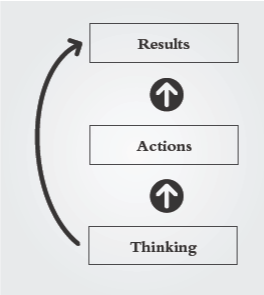Do more in 12 weeks than most achieve in 12 months.

Have you ever set ambitious New Year’s resolutions only to lose momentum after a few months? Have you noticed how much progress you make just before a deadline or year-end? The struggle with long-term goals is real, and it’s a common challenge many of us face. However, Brian P. Moran and Michael Lennington’s “The 12 Week Year” offers a transformative approach to productivity that could change how you plan and achieve your objectives.
Instead of setting annual goals that often lead to procrastination, this method encourages you to think in 12-week cycles. According to Parkinson’s Law, work expands to fill the time allocated for its completion. By condensing your planning horizon, you create a sense of urgency and focus that drives higher performance. In this post, we’ll explore my 5 main take aways of the 12-week year and how they can revolutionize your approach to personal and professional growth.
It’s an Execution Problem.
We tend to tell ourselves, “I don’t know how.” I’m guilty of spending hours planning, reading, and watching YouTube videos on how to do something instead of actually doing it. the other day I was watching videos about how to do pull-ups, as if there’s some secret shortcut to getting stronger, when in fact, I should just do pull-ups.
The authors give a great example about losing weight:
“Sixty-five percent of Americans are overweight or obese. Do you think there is some secret to losing weight and getting fit? The diet and fitness industry is a $60 billion industry. Each year, new books are published on diet and exercise. When I searched ‘diet books’ on the Internet, my search came back with 45,915 results. Almost 46,000 books.”
Most people know how to lose weight and get fit but fail to act. We have an execution problem.
As Aristotle said, “Excellence, then, is not an act but a habit.”
Discard Annualized Thinking
The problem with annualized thinking is that in January, December feels far away, giving us a false sense of plenty of time. Often, by the end of January, we are already behind on our goals but believe we still have ample time to catch up. This false sense of security continues into March, and we find ourselves even further behind while still thinking we have lots of time. This way of thinking persists until late in the year.
The reality is that every month, week, day, and moment counts. Unless you act daily towards your goals, you are performing sub optimally. Have you noticed how much more productive you are right before a deadline or year-end? This increased productivity is a result of the urgency that comes with a looming deadline.
Periodization
First used by Eastern European athletes for their Olympic training in the 1970s, periodization’s principles are focus, concentration, and progressive overloading of specific skills. Typically, the period lasts 4-6 weeks, after which a different skill is targeted in the same manner. This method of training is still employed today.
By leveraging this knowledge and using the 12-week approach to periodization, you can clarify the actions you need to take today to move closer to your long-term goals. Changing your thinking will change the way you act and, consequently, your results.

Think of it this way: 12 weeks equals 1 year.
Emotional Connection
Execution is not complicated, but that doesn’t mean it’s easy. Change is generally an uncomfortable experience, and the short-term cost often seems greater than the long-term benefit. To execute successfully requires a strong emotional connection. Therefore, a critical first step in executing well is having a compelling vision that motivates you to forego short-term comfort for long-term goals.
Mental manifestation is the starting point: “You create things twice; first mentally, then physically.” To harness the power of vision, your vision of your future life needs to be bigger than it is now. To reach the next level, you need to be motivated to move through fear, uncertainty, and discomfort. A clear vision will keep you moving forward.
“All my life I wanted to be somebody. Now I see I should have been more specific.” —Lily Tomlin
The Execution Phase
The execution phase is where the real work happens. It’s not enough to just plan; you need to act. Start by breaking down your goals into long-term (3-5 years), medium-term (1-3 years), and short-term (1 year). Now, use the principles outlined in “The 12 Week Year” to set your 12-week goals, along with manageable weekly and daily tasks.
Monitor your progress regularly and adjust your actions as needed. Use tools like weekly scorecards to track your performance and stay accountable. Don’t only track your trailing indicators, which measure your outcomes, but also your leading indicators, which are the actionable steps you take. Good scores for leading indicators will result in favourable trailing indicators in the future.
This phase emphasizes consistent action. Remember, success is not about perfection but about making steady progress. Celebrate small wins and learn from setbacks. This iterative process will keep you moving forward and help you achieve your 12-week goals.
Get The 12 week year
For a deeper dive into these principles and more practical advice on implementing them, I highly recommend getting a copy of “The 12 Week Year” by Brian P. Moran and Michael Lennington. The book offers comprehensive guidance and additional tools to help you maximize your productivity and achieve your goals faster.
Conclusion
By adopting the 12-week year framework, you can significantly enhance your productivity and achieve more in 12 weeks than most do in 12 months. Embrace this approach, and watch as your personal and professional life transforms.

Leave a Reply